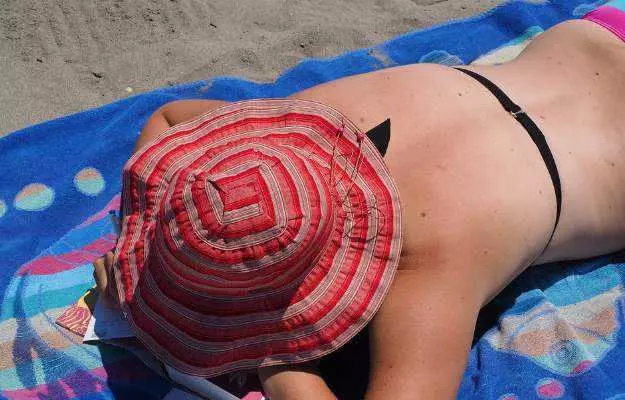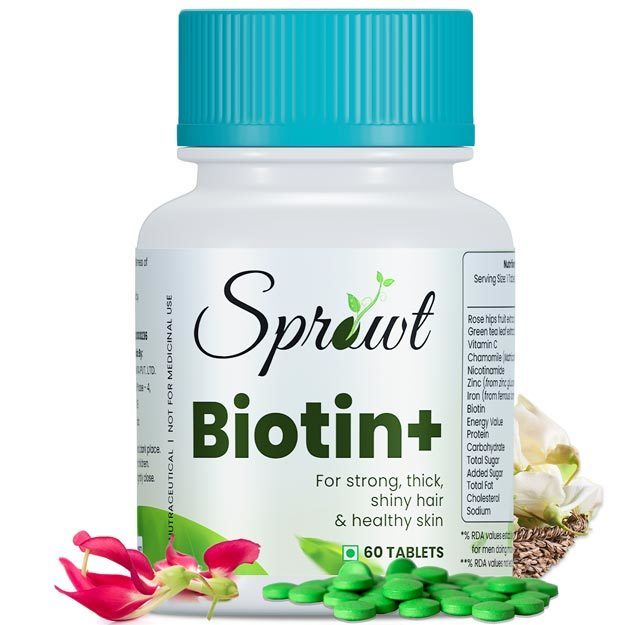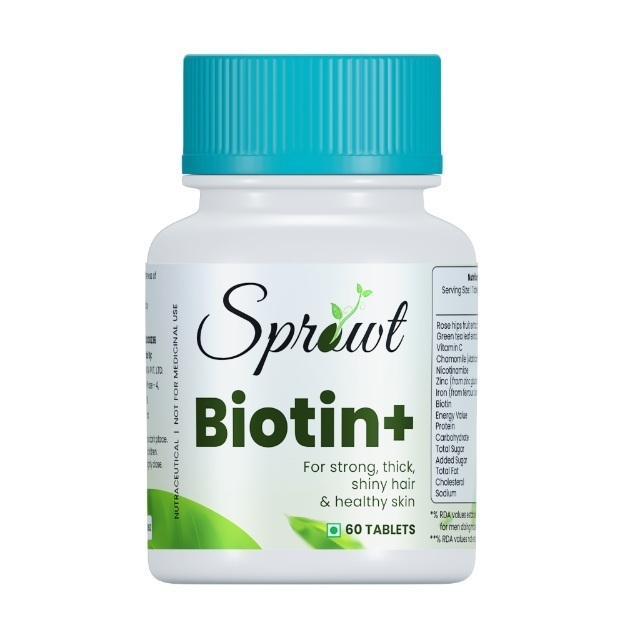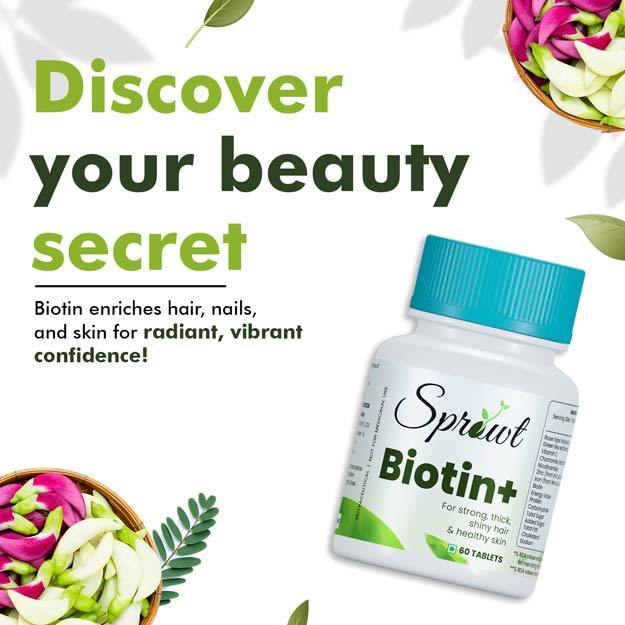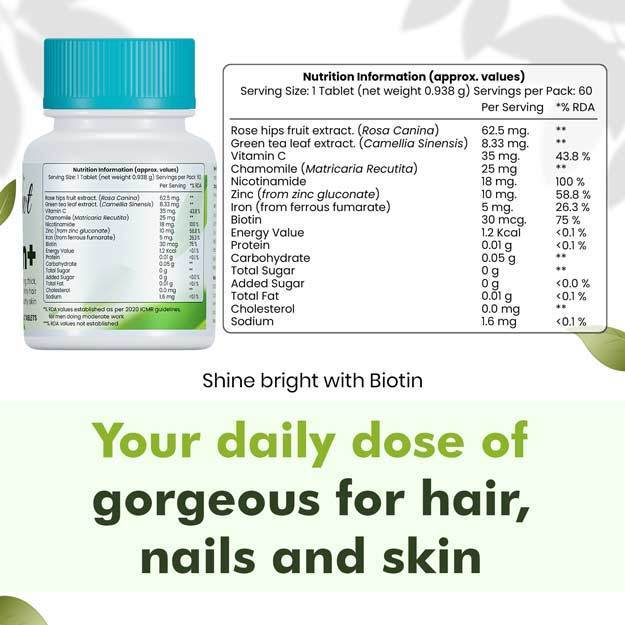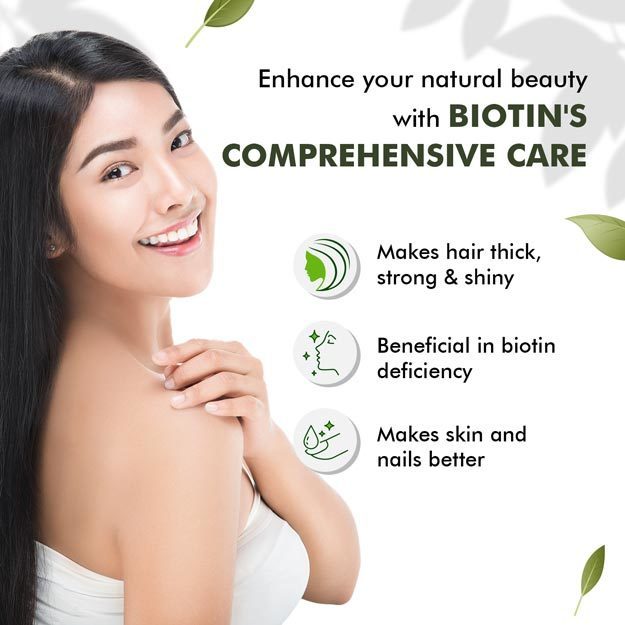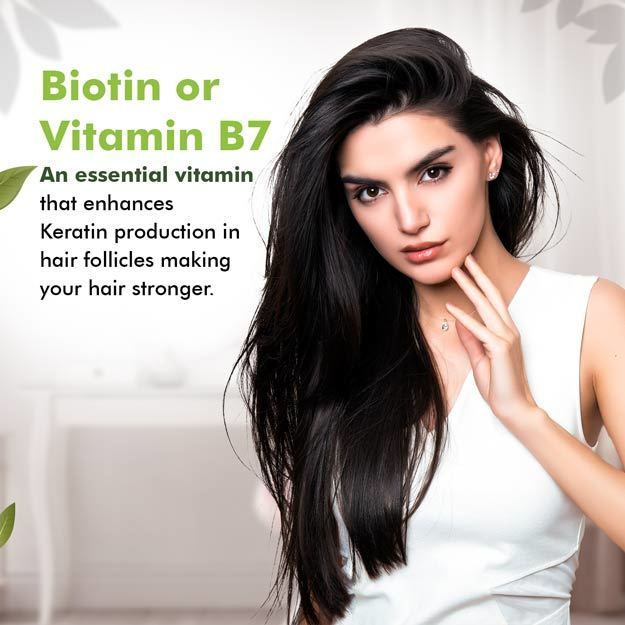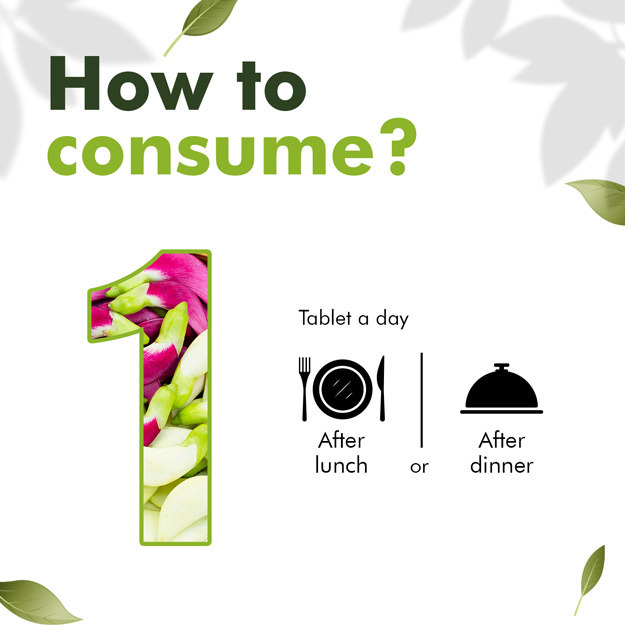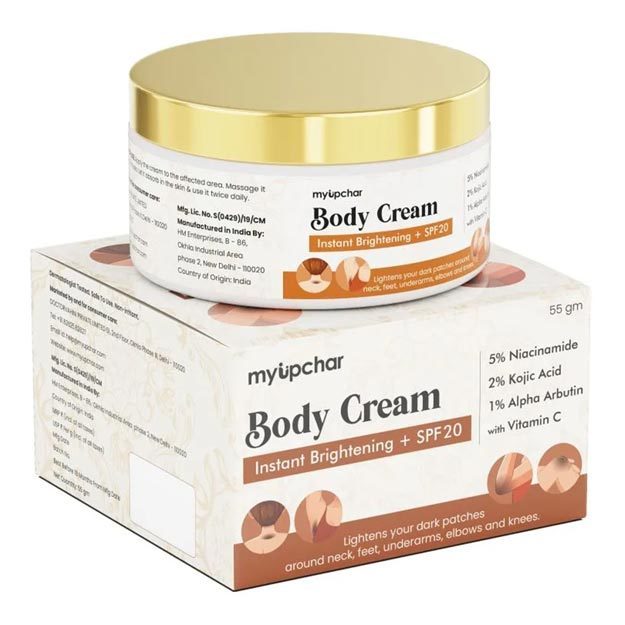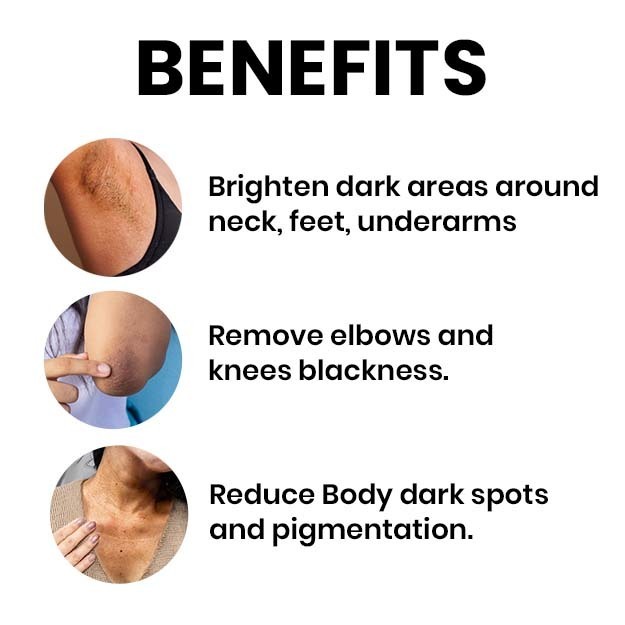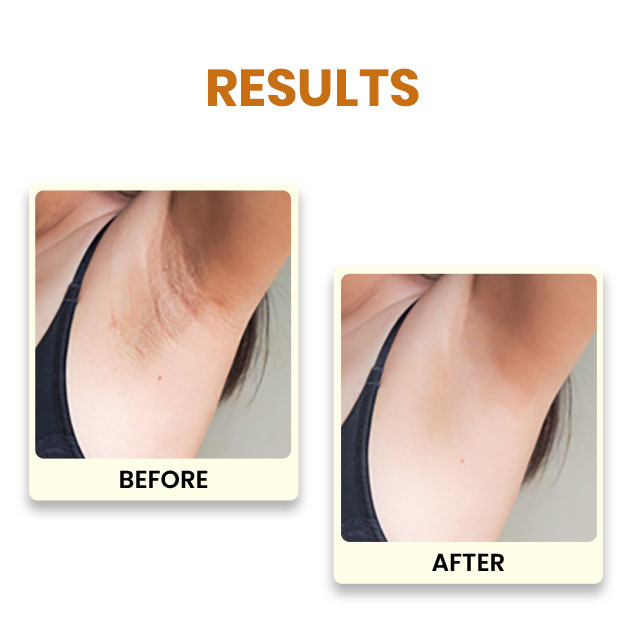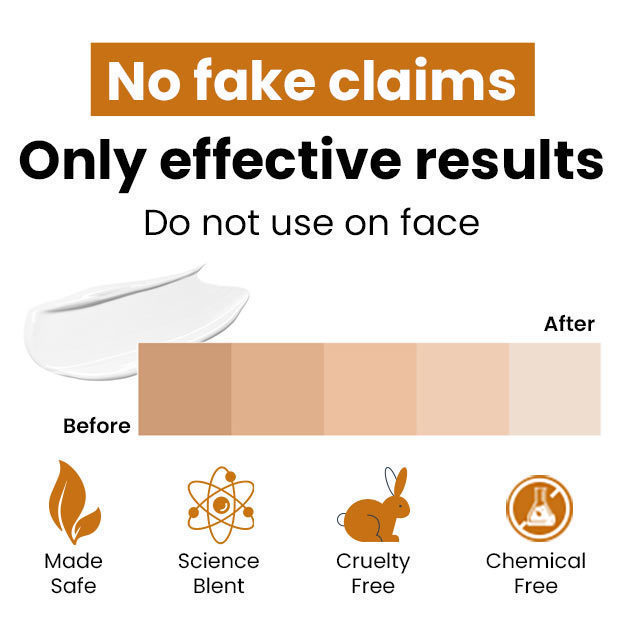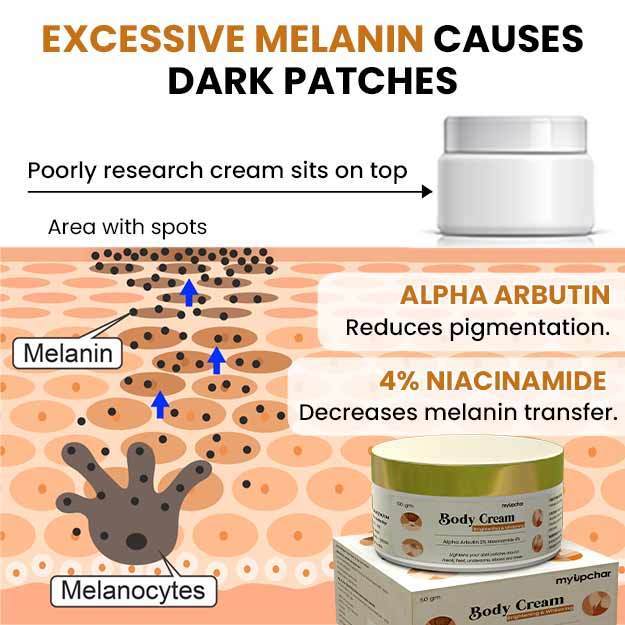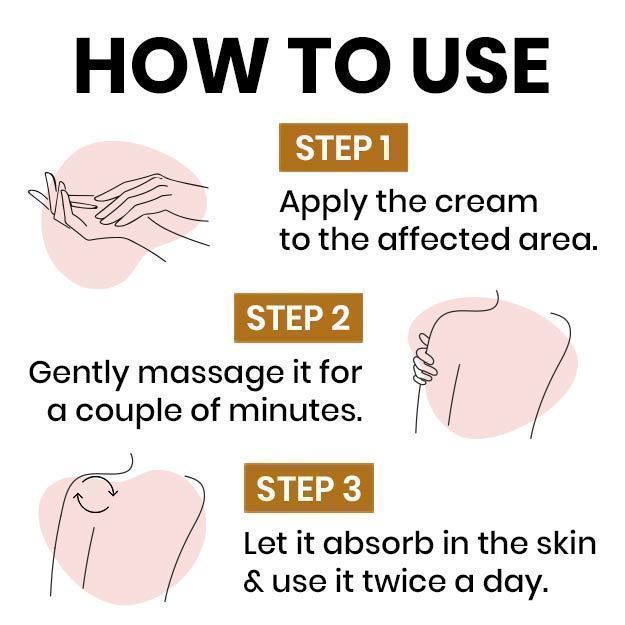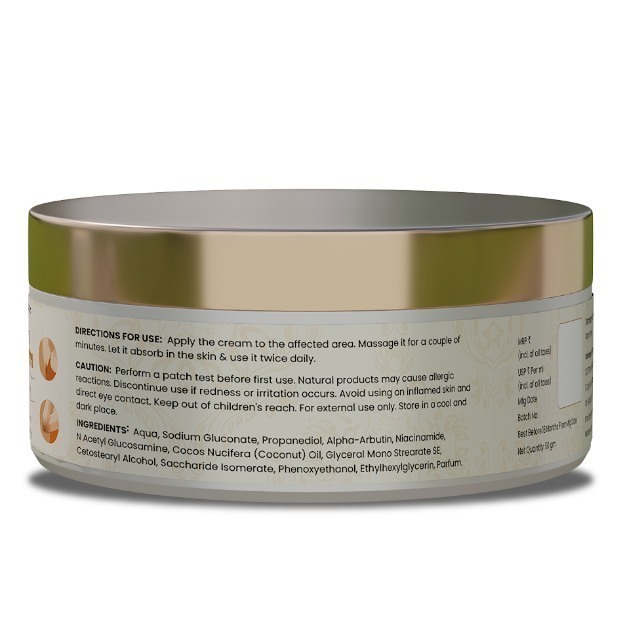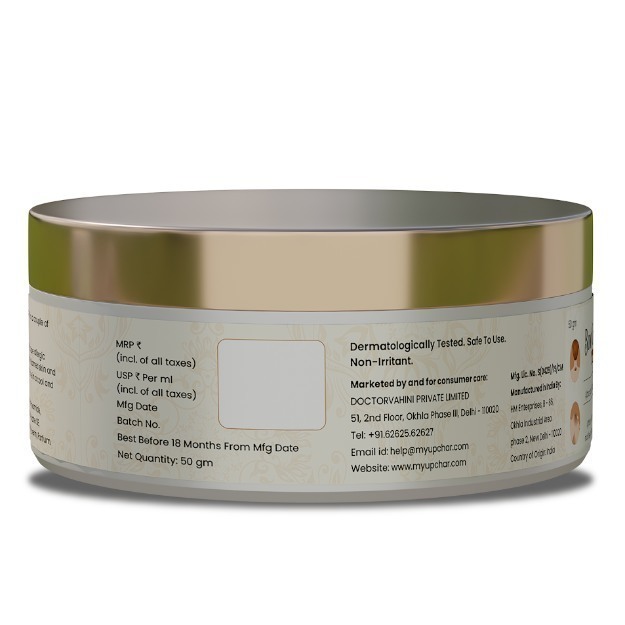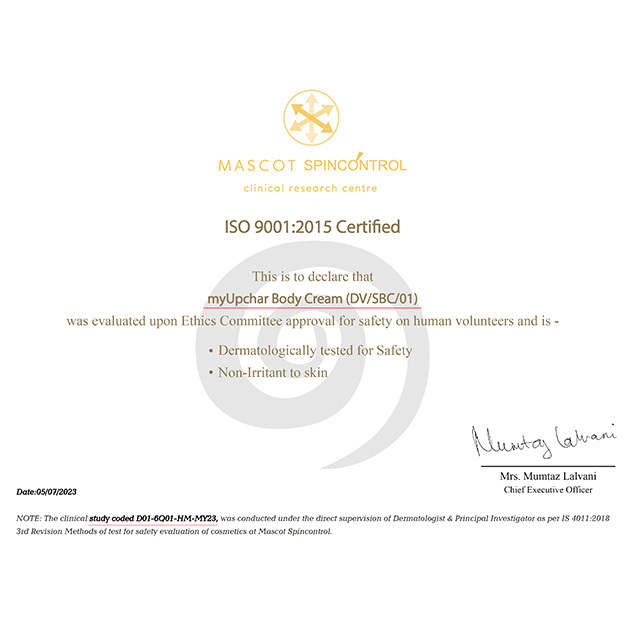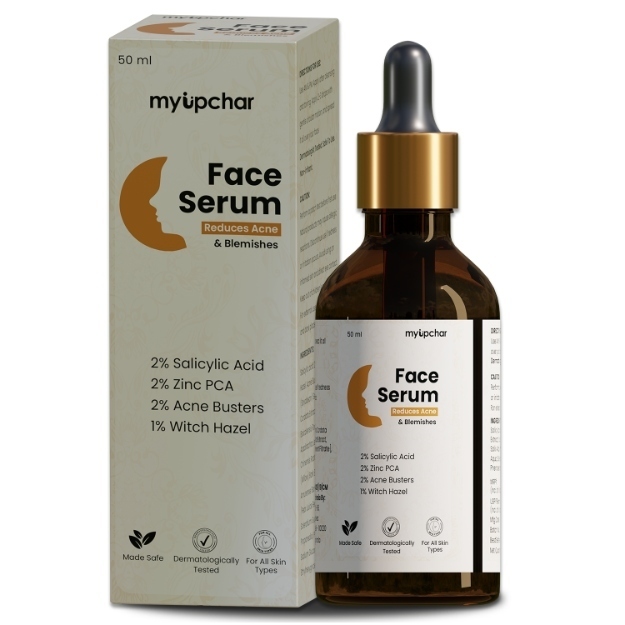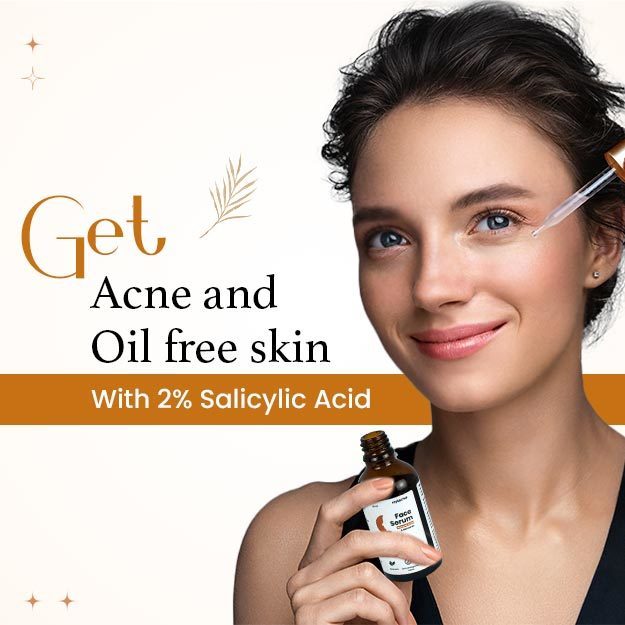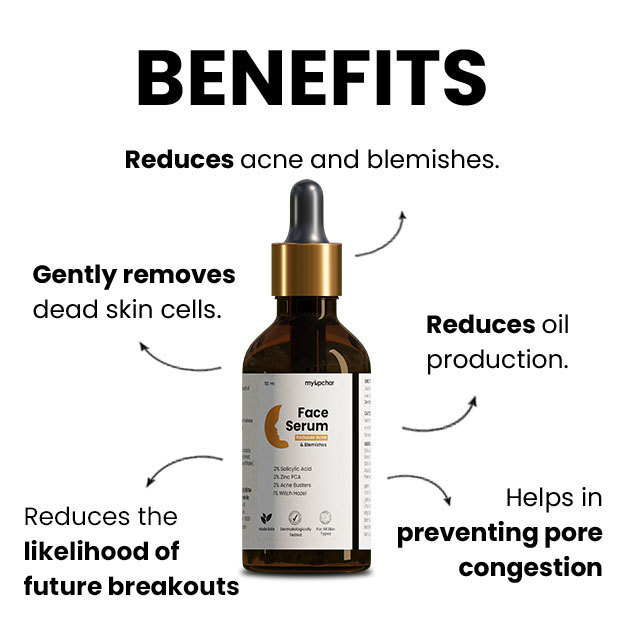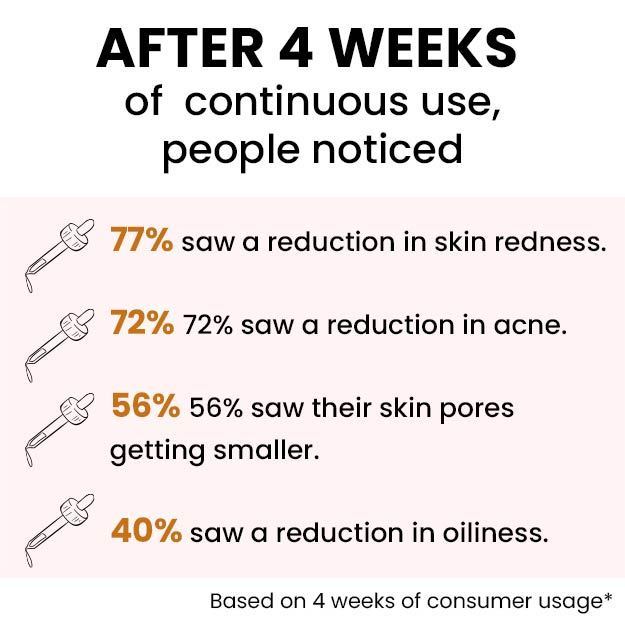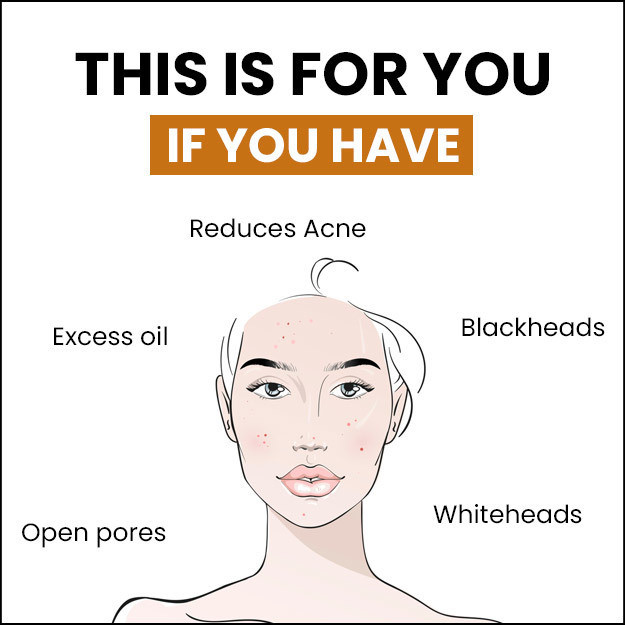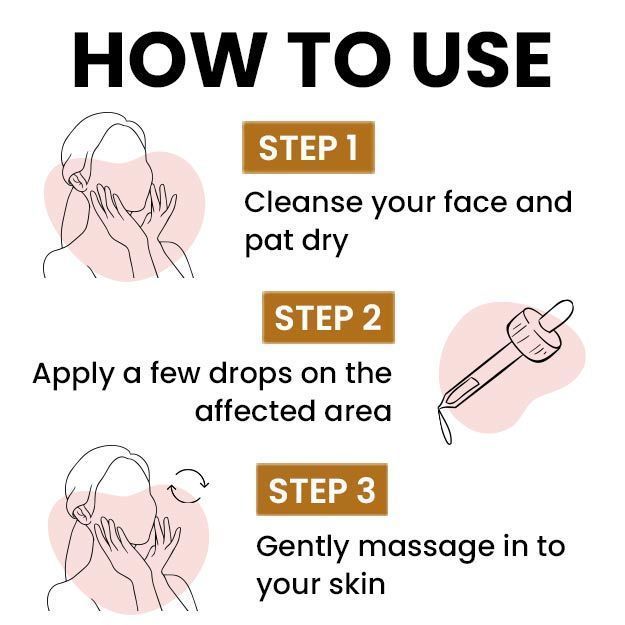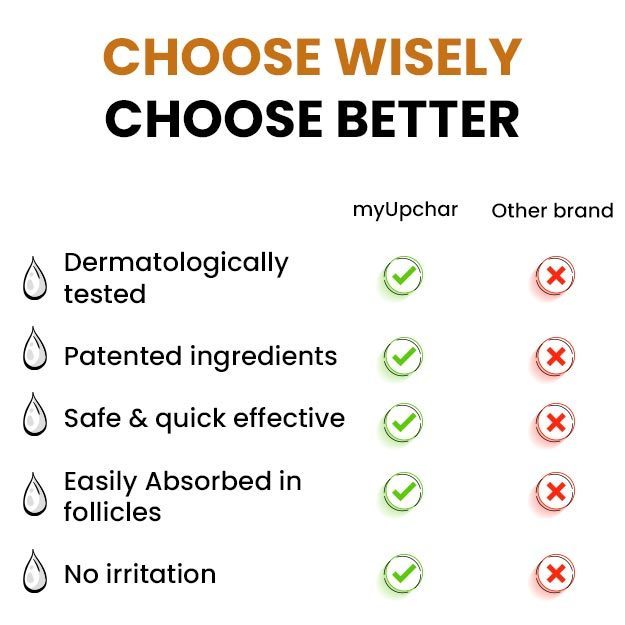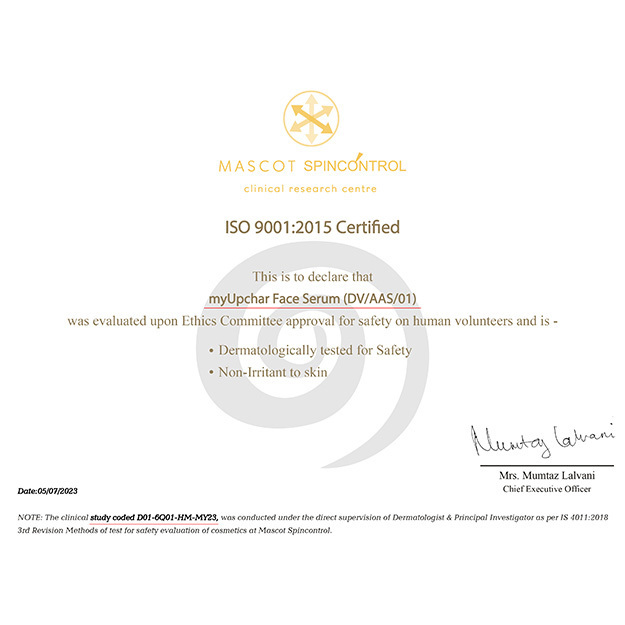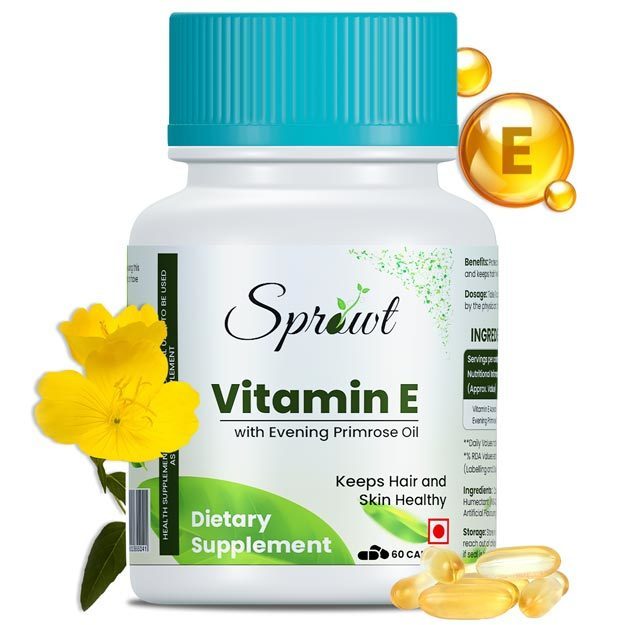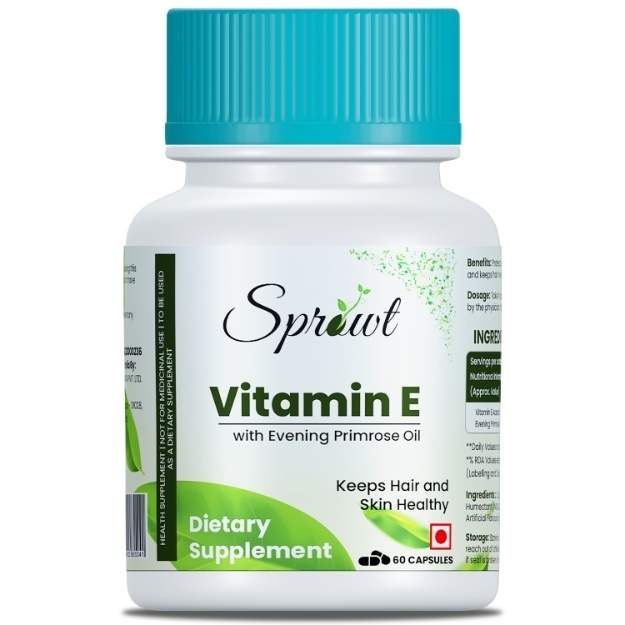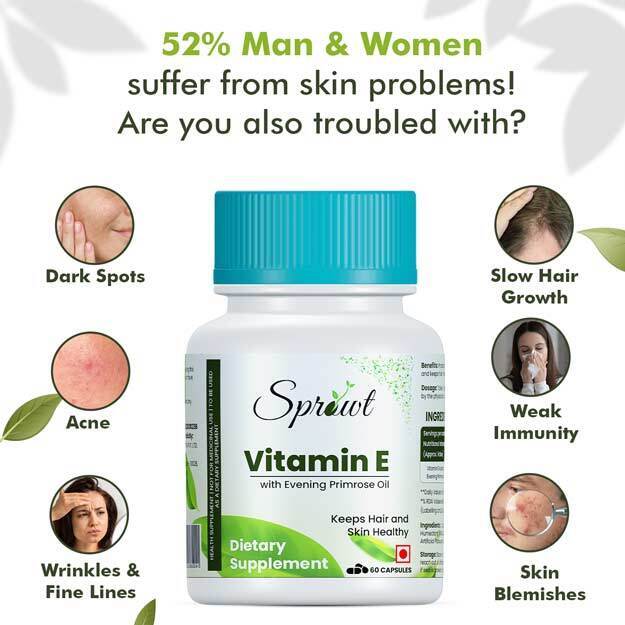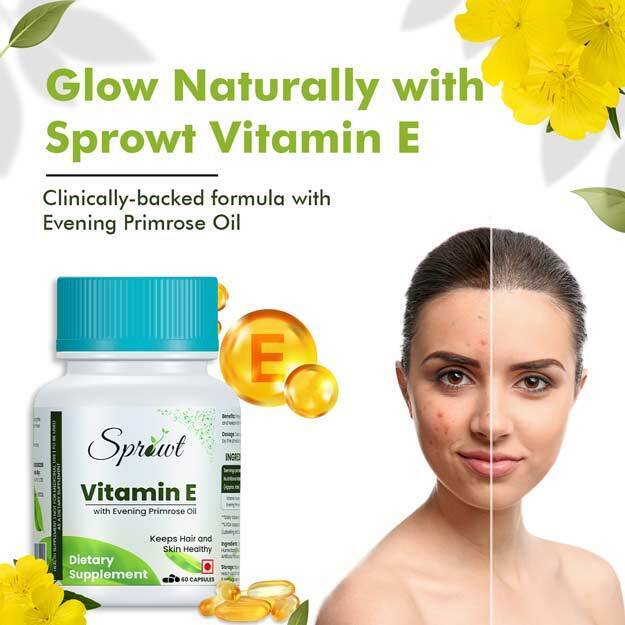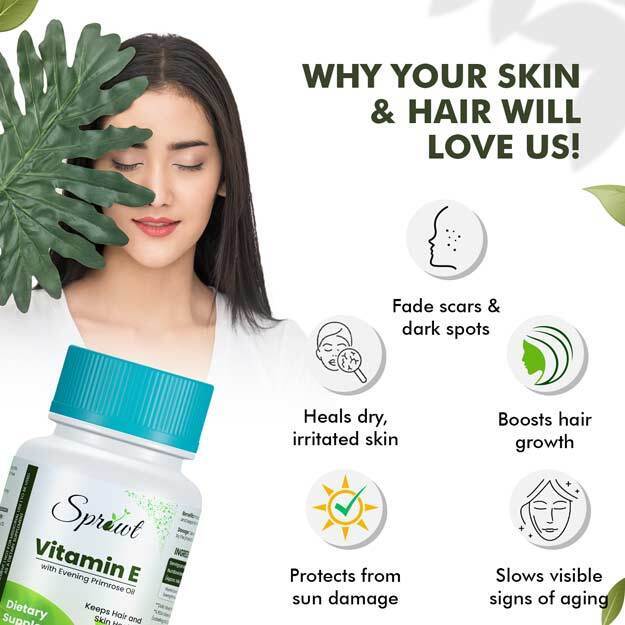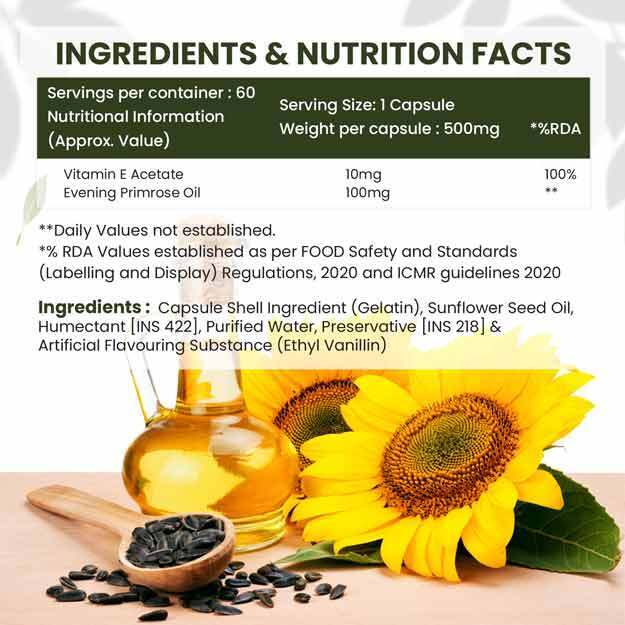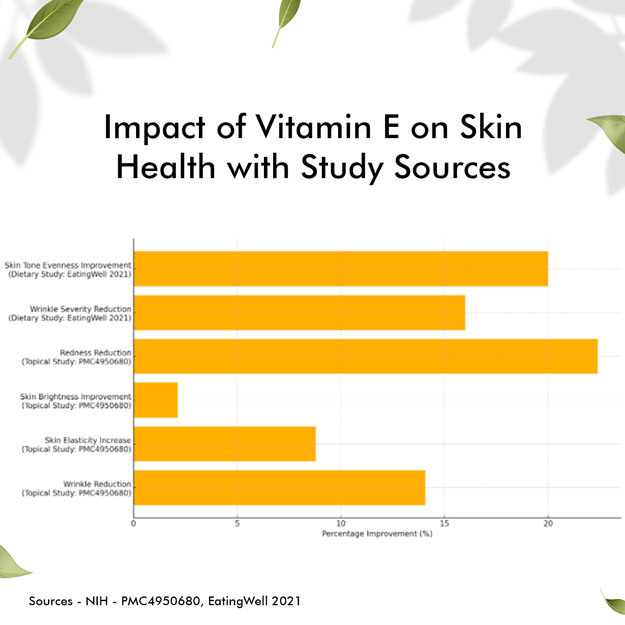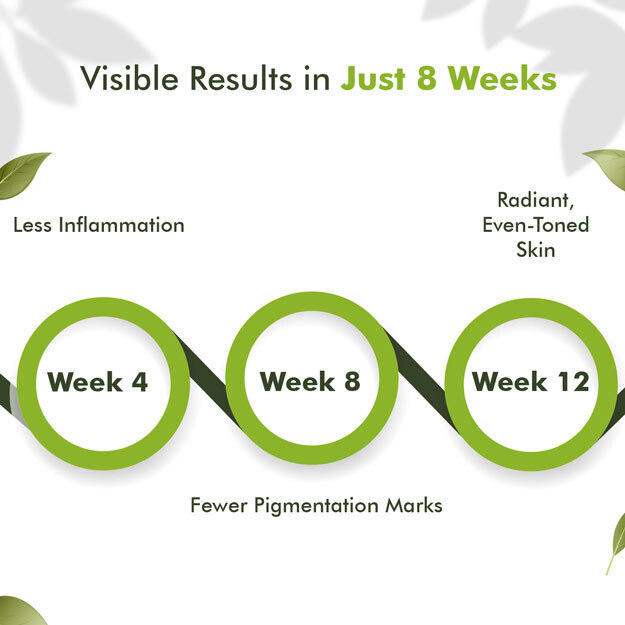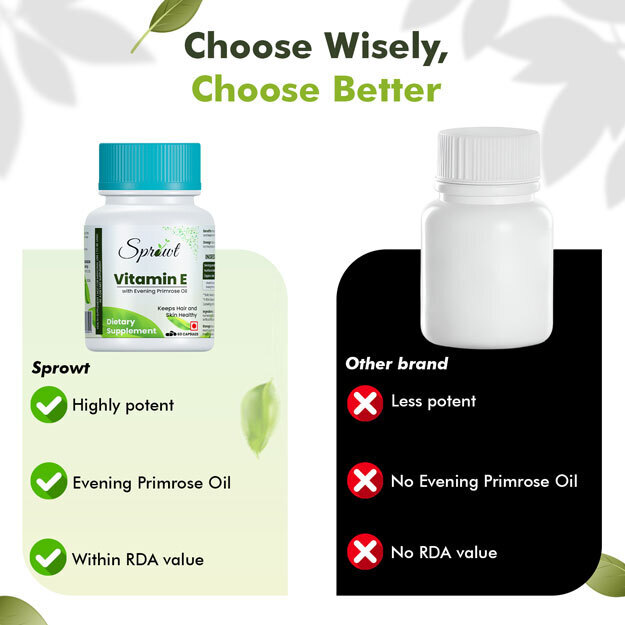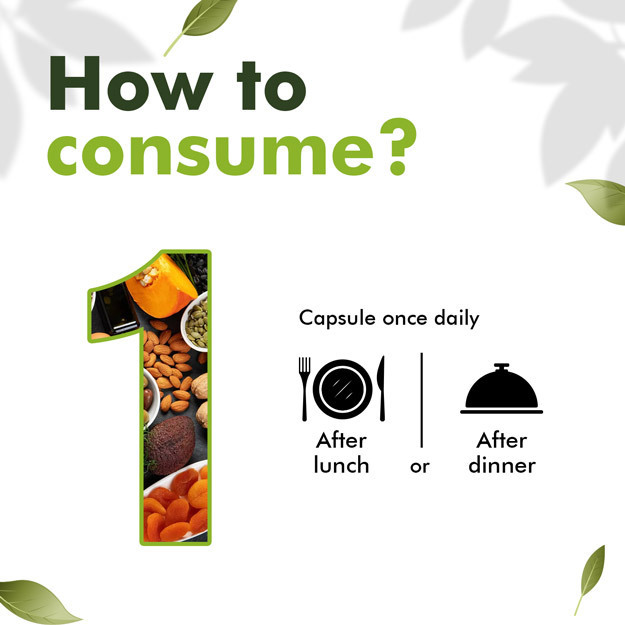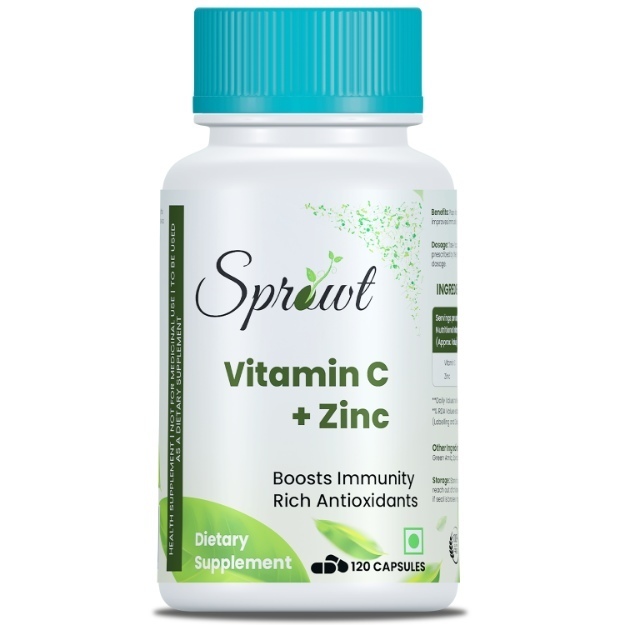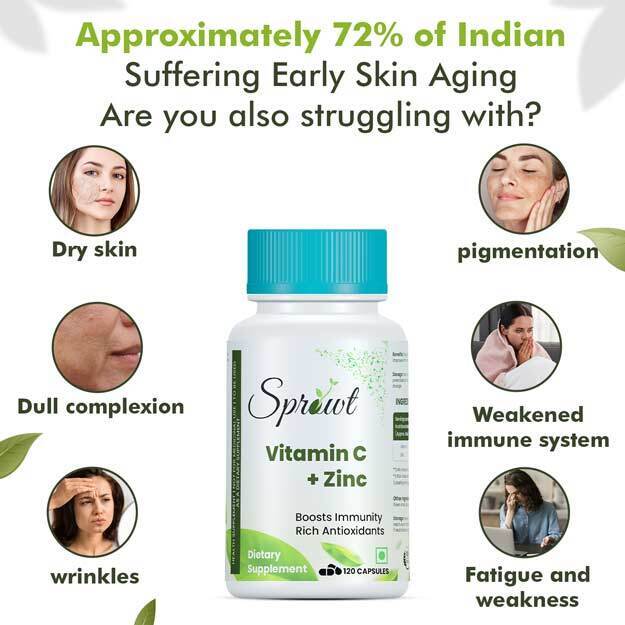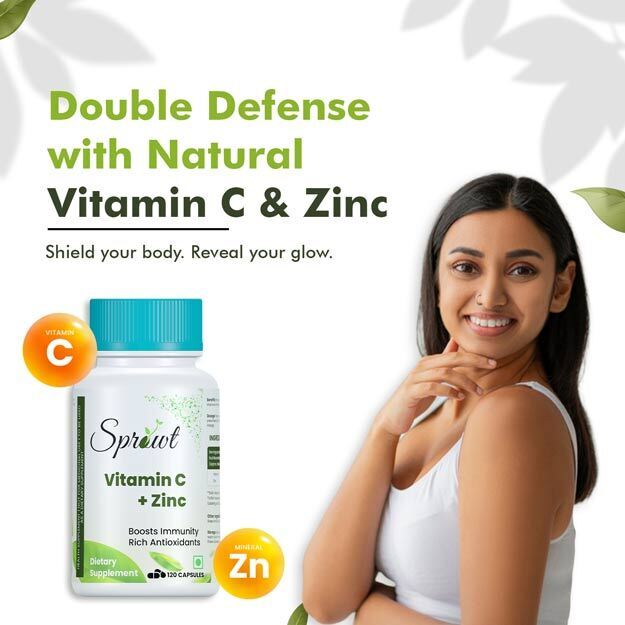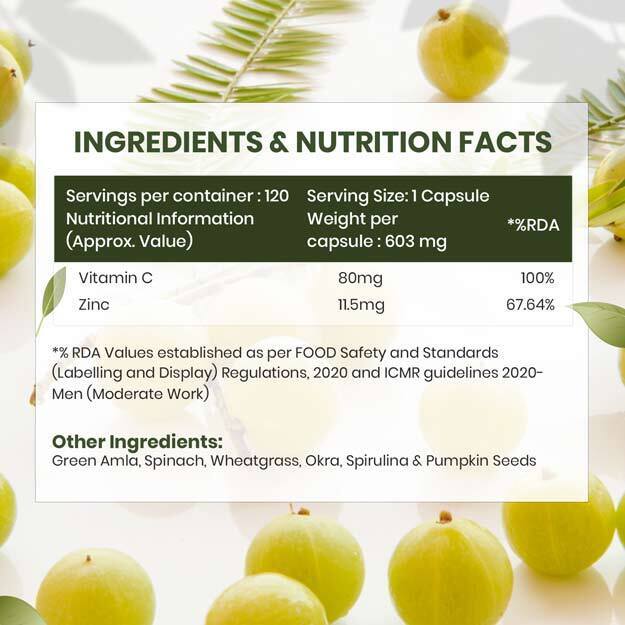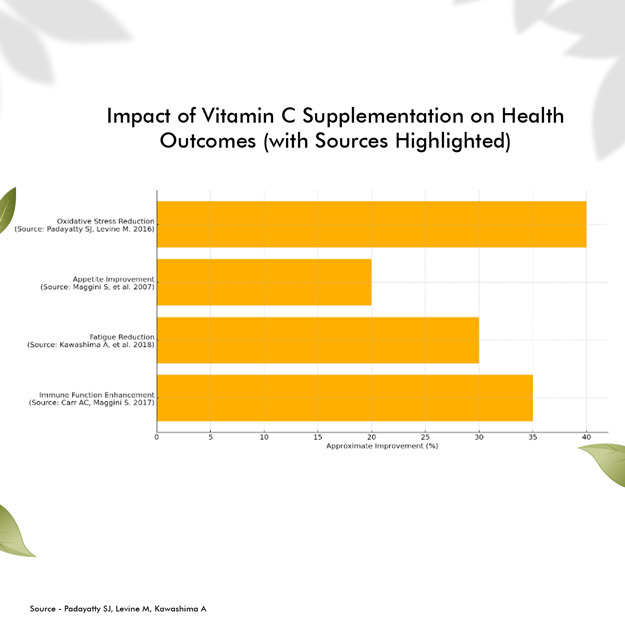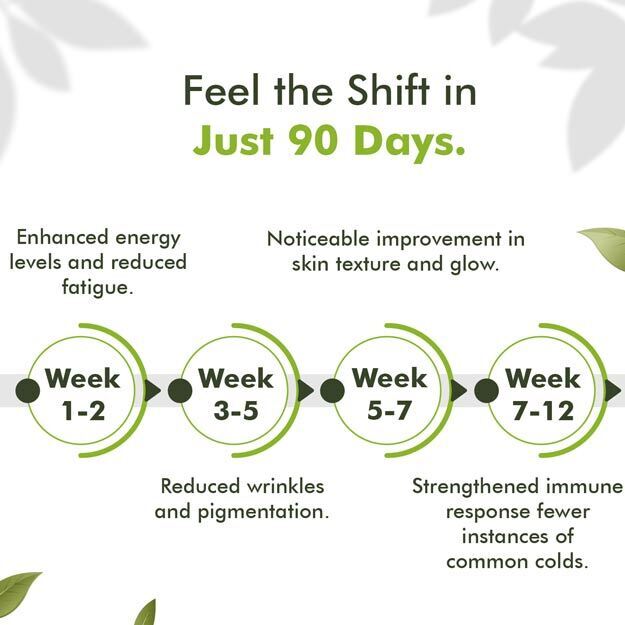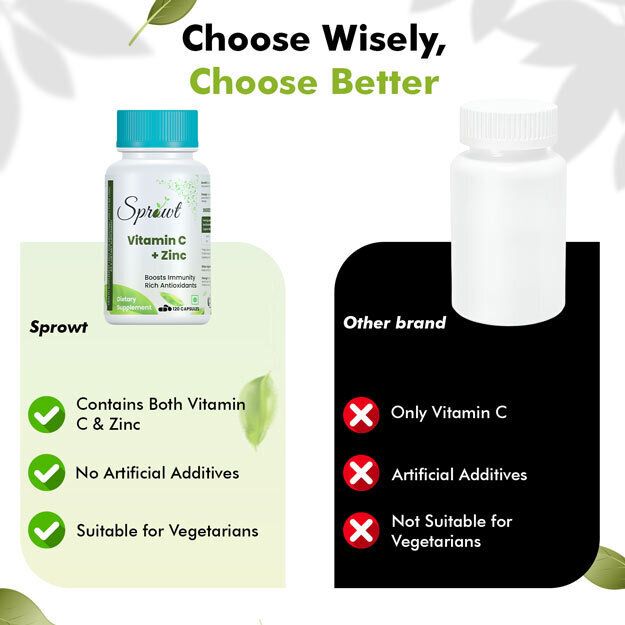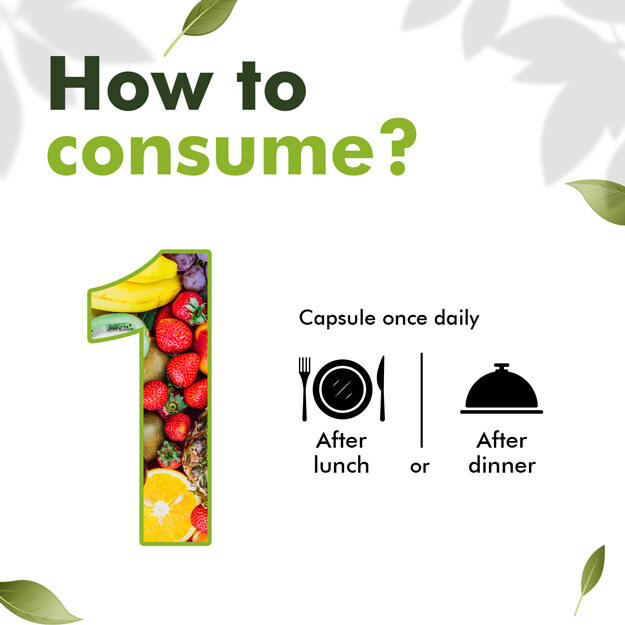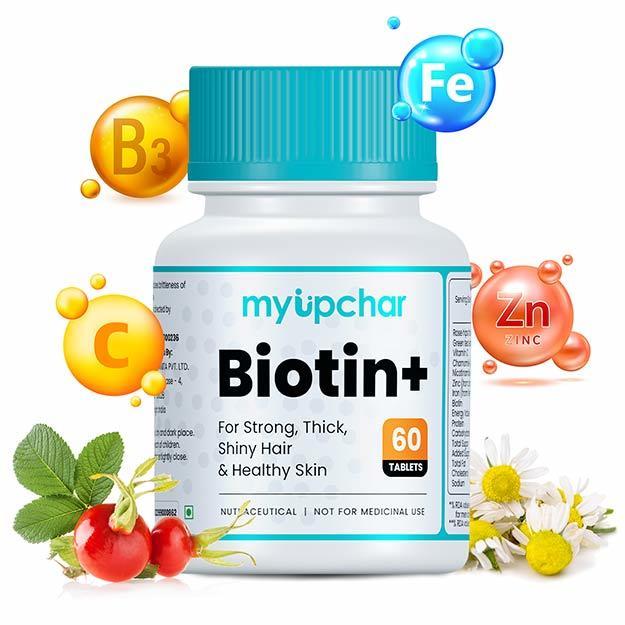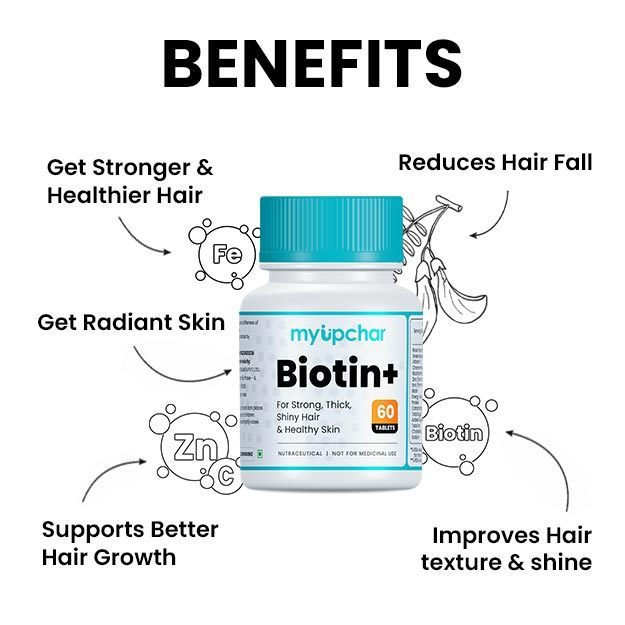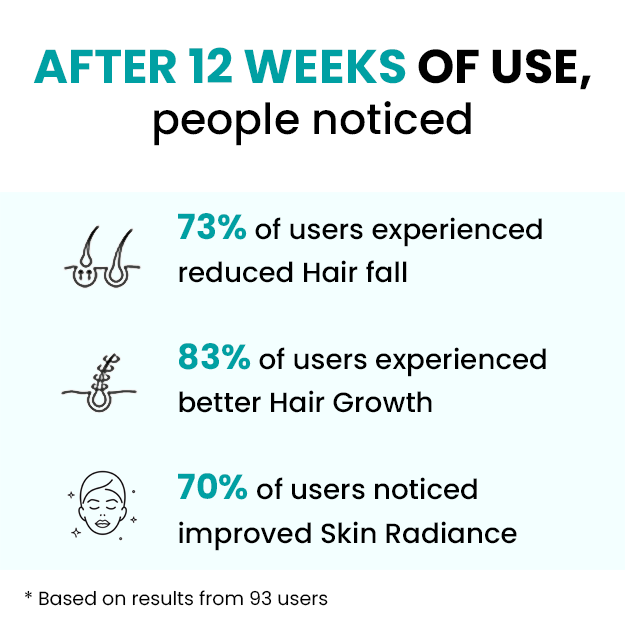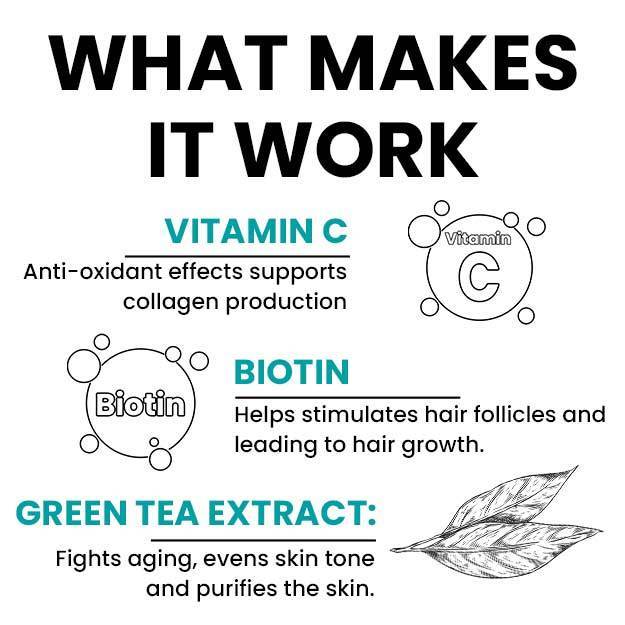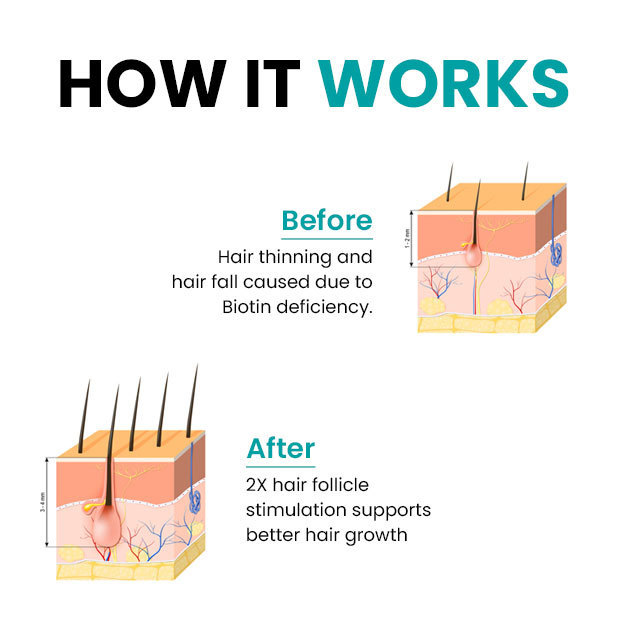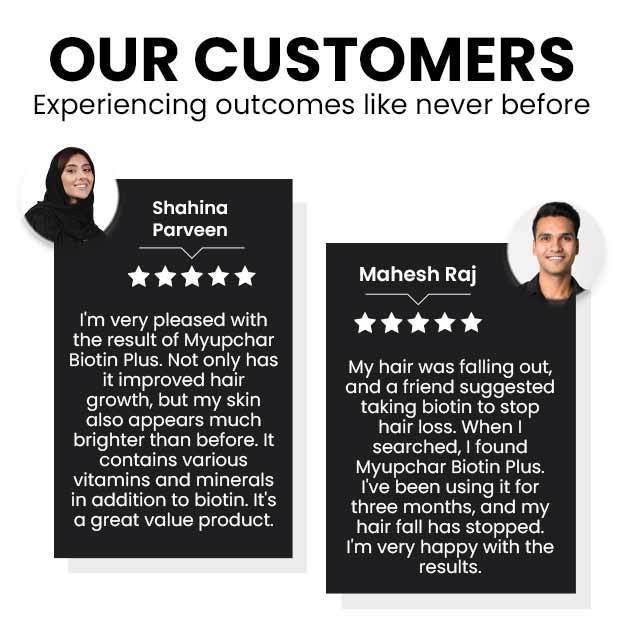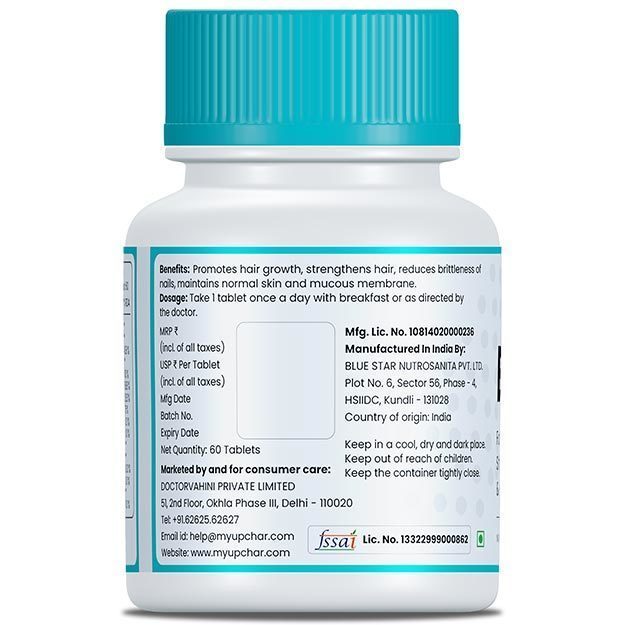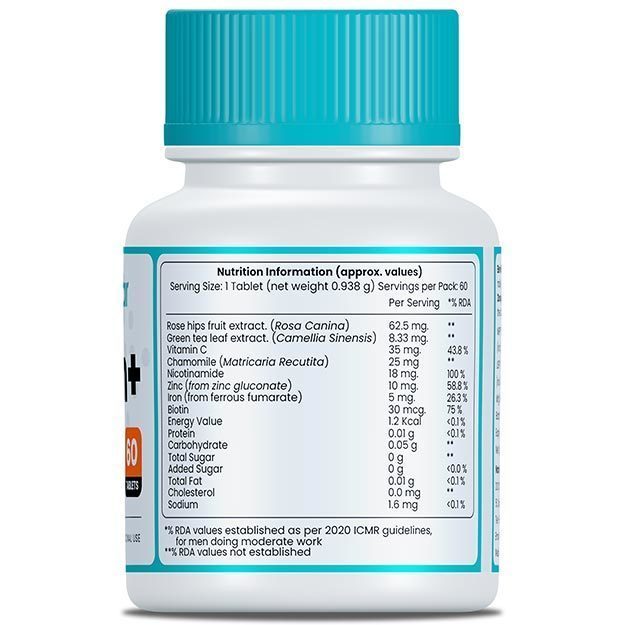Hey! So, you've been enjoying the sunshine, maybe at the beach or just hanging out. But now your skin's a bit darker than you'd like, right? That's a tan! Some people dig it, but if you want to get your normal skin color back, it's totally possible. Let's talk about how to gently make that tan disappear using easy things, mostly stuff you can find right at home! We'll also answer those questions you might have about tanning. First things first, let's get the super simple basics of what a tan is and why it happens.
- What is Tanning?
- Why Does it Happen? Why Do I Tan?
- What Causes Tanning?
- Is Tanning Good For Skin?
- Can I Moisturize After a Tan?
- Does Tanning Make You Itchy?
- Is Sun Tan Permanent?
- Is it Possible to Remove 100% Tan?
- How Should You Treat Skin after Tanning?
- Does Sunscreen Stop Tanning?
- Study about Sun Tan:
- Medical Treatments for Tan Removal
- Can Tan be Removed Naturally?
- Which Food Helps Remove Tan?
- Which Chemical Removes Tan?
- How to Remove Sun Tan at Home?
- How to Prevent Sun Tan?
- Summary
What is Tanning?
When you spend time in the sun, your skin gets darker, right? That’s because your skin produces more pigment called melanin. Melanin is what gives your skin its color. So when you’re out in the sun, your skin tries to protect itself from the harmful effects of the sun’s UV rays by producing more melanin, which is why your skin gets darker. It’s trying to shield itself.
This is what we call tanning. It’s basically your body’s way of protecting itself from sun damage. Tanning can happen naturally, just by being outside in the sun, or with artificial sources like tanning beds.
Why Does it Happen? Why Do I Tan?
Okay, just imagine, your skin has these tiny, tiny artists living inside. They have a special job to draw with a color called melanin. Melanin is what gives everyone their unique skin shade, from super light to beautifully deep!
Now, when the sun shines really bright on you, it's like these little artists feel it! They're like, "That's some strong light heading our way! We need to get our crayons out and draw some extra color to protect the skin!"
And that extra color they draw? That's your tan! It's like your skin putting on a temporary, darker coat to shield itself from the sun's brightness. Pretty cool, huh? It's just your body being smart and looking out for itself!
What Causes Tanning?
The number one reason for a tan? The sun! It sends out rays called UV rays, and these rays tell your skin to make more of that color stuff. There are two main types of these UV rays that cause tanning:
- UVB Rays: Think of these as the rays that can burn you and also give you a tan that sticks around longer. They're what make your skin go red if you're out in the sun for too long. But they also tell those color-makers in your skin to make more color over time, and that's your tan.
- UVA Rays: These rays go deeper into your skin. They can make the color you already have get darker really fast, so you see a tan pretty quickly. But they also help your skin make more color in the long run, and they can even make your skin get old faster.
And hey, those tanning beds? They use UV rays too, just like the sun, so they'll give you a tan and have similar dangers.
Is Tanning Good For Skin?
Okay, let's get straight to the point about tanning and your skin's health. Even if you're rocking that sun-kissed look and think it's pretty cool, what's really going on under the surface is that your skin has taken a bit of a hit from the sun's powerful rays.
Think of a tan not as a healthy glow, but more like a warning sign that’s your skin's way of saying, "Ouch, that was a bit much, I'm trying to protect myself!" So, when your skin gets darker from the sun, it's not a good thing, it means it's been damaged.
And here's a really important thing to remember: there's no such thing as a "safe tan." Any change in your natural skin color because of the sun means it's been exposed to those harmful UV rays. These rays aren't just about that temporary tan; they can also make your skin get old faster, cause wrinkles and those little dark spots, and, the biggest worry of all, increase your risk of getting skin cancer down the road. So, while a tan might look a certain way, it's definitely not a sign of happy, healthy skin.
Read More- (How to get glowing skin)
Can I Moisturize After a Tan?
Alright, so let's talk about keeping your skin happy after it's been soaking up the sun! Imagine your skin is like a sponge, when it's been out in the sun, it can lose some of its water and feel all tight and dry, just like a sponge that hasn't been dipped in water.
That's where lotion, or moisturizer, comes to the rescue! It's like giving your skin that big, refreshing drink it's been craving. It helps put back all the good moisture the sun might have taken away, making your skin feel soft and smooth again, kind of like a sponge that's plump and happy after a good soak.
Plus, using lotion can even help you avoid that not-so-fun flaky skin that sometimes happens after you've spent a bit too much time in the sun. Think of it as keeping your skin cells nicely glued together instead of them peeling off like old wallpaper.
So, the bottom line? After some sun, grab a lotion that feels good on your skin like something gentle and not too greasy! Your skin will thank you for keeping it nice and watered.
Does Tanning Make You Itchy?
Okay, let's clear up that itchy feeling after some sun! So, the tan itself? It's usually just a change in your skin color and doesn't typically make you want to scratch.
But think about why you got that tan in the first place – you were probably out enjoying the sunshine, right? And sometimes, too much sunshine can make your skin a little unhappy. For example, if you get a sunburn – you know, when your skin turns red and feels sore? Well, as that sunburn starts to get better, it can definitely get super itchy, like your skin is saying, "Hey, I'm healing!"
Also, sometimes when we're out in the sun for a long time, especially if it's hot and we're sweating, our skin can get a bit irritated and break out in a heat rash or other little bumps. And guess what? Those can be really itchy too!
So, if you're feeling that annoying itch after some sun, it's more likely because the sun did a little something extra to your skin (like a mild burn or heat rash) rather than the tan itself being the culprit. It's your skin reacting to the sun's intensity, not just the change in color.
Is Sun Tan Permanent?
Alright, let's clear up that "will this tan be with me forever?" worry! The super good news is: nope! A sun tan is like a temporary visitor, it doesn't plan on sticking around for the long haul.
Think of your skin like it has its own little cleaning crew that's always working. It's constantly making brand new skin cells and gently shedding the old ones, kind of like a never-ending skin refresh button. That top layer of your skin that got all sun-kissed and tanned? Well, eventually, those cells will get their walking papers and fall off, making way for fresh, new skin that hasn't seen as much sun.
Now, how long this "skin refresh" takes can depend on a few things. If the sun was super strong and you were out for ages, that tan might hang around a bit longer. Also, your natural skin color plays a part. Some people's skin renews faster than others. And of course, how well you treat your skin can also affect how quickly that tan fades. But usually, you can expect that tan to gradually disappear within a few weeks to a couple of months as your amazing skin naturally does its thing and makes new, untanned cells. So, no need to panic, your natural glow will be back!
Read More- (Beauty, skin and hair care tips)
Is it Possible to Remove 100% Tan?
Okay, so you're wondering if you can poof that tan away completely, like it never even happened? Well, here's the honest truth: making it totally disappear, as if you never spent a single minute in the sun, can be a little bit like trying to un-bake a cookie – it's tough!
That extra color that shows up as a tan doesn't just sit on the very surface of your skin. It goes a little deeper, kind of like how a stain soaks into a cloth. And just like with that stain, it takes time for your skin to naturally replace those colored cells with fresh, new ones that have your regular color.
But hey, don't get discouraged! Even if you can't make it vanish instantly, you can definitely make that tan much lighter, so it's barely there. Think of it like gently washing that stained cloth over and over, it might not go back to being perfectly clean right away, but it will definitely fade a lot. If you use good ways to remove tan regularly and are kind to your skin, you can absolutely make that tan fade quite a bit and get your skin looking like its normal, happy self again over time. It's like you're gently nudging your skin back to its original sunshine-loving shade!
How Should You Treat Skin after Tanning?
Okay, so your skin's been sunbathing and now has a tan? Time to be nice to it and help it feel better. Here are some easy things you can do:
- Cool Down: If your skin feels hot or looks a bit red, hop in a cool shower or put a cool, wet cloth on it. This will help calm things down.
- Moisturize Lots: Being in the sun can dry your skin out, so slather on a good, watery lotion. This will put the water back in and stop your skin from peeling.
- No Rough Stuff: Don't use strong soaps, scrubs, or anything that might irritate your already sun-touched skin. Think gently!
- Drink Up! Water isn't just good inside; it helps your skin too. Drink plenty to keep it happy and help it heal.
- Comfy Clothes: Wear clothes that are loose and let your skin breathe. Tight stuff can rub and make things worse.
- More Sun? No Thanks! The most important thing is to keep your skin out of the sun. Find shade and wear sunscreen if you have to go out.
Read More- (What are healthy food and their health benefits)
Does Sunscreen Stop Tanning?
Okay, so think of sunscreen like your skin's superhero sidekick when it comes to the sun! It's like putting on an invisible force field that either sucks up or bounces away those bad UV rays from the sun. And guess what? That means way less of that strong sunlight gets into your skin to tell those little color-making cells to go into overdrive.
So, when you use a good sunscreen with a decent SPF, it's a big help in keeping you from getting a tan. But even cooler than that, it's like a suit of armor protecting your skin from getting burned, getting wrinkly and old too fast, and even that scary thing, skin cancer.
However, no sunscreen is perfect. So, if you're out in super strong sunshine for a really long time, you might still get a tiny bit of a tan, even with sunscreen on. But it'll be way less, and most importantly, your skin will be so much safer and happier!
Study about Sun Tan:
The study titled "Aware, Motivated and Striving for a 'Safe Tan': An Exploratory Mixed-Method Study of Sun-Protection During Holidays" investigates the relationship between individuals' knowledge, motivation, and actual sun-protection behaviors during vacations.
The researchers talked to these 17 people, asked them about their sun habits, and even checked how they used sunscreen.
This table reflects the review based on the conversation being done with 17 people.
These people knew about sun safety and wanted to protect themselves. However, they weren't very good at it. They mostly used sunscreen but didn't put enough on and thought they could stay in the sun longer than they should. They didn't use shade much, and when they covered up, it was usually just a hat or sunglasses. Wanting a tan made these people think they were safer than they were, even with sunscreen.
Even though people know about sun safety and want to protect themselves, this small study of 17 people shows that they don't always do it right, especially when trying to get a tan. This means we need to find better ways to help people actually use sun protection effectively.
Medical Treatments for Tan Removal
Alright, so if you're thinking, "Okay, these home remedies sound good, but I want that tan GONE, like yesterday!" Then there are some more powerful options that skin doctors, those super smart people called dermatologists, can do. Think of these as the "turbo" settings for tan removal! Here's a peek at what they can do:
- Chemical Peels: Imagine your skin has a top layer that's holding onto that tan. What these doctors do is put a special liquid on your skin that gently makes that top layer peel off. It's like shedding old skin to reveal the fresh, lighter skin hiding underneath.
- Microdermabrasion: Think of this like a super gentle skin vacuum cleaner with tiny, tiny crystals. It carefully brushes off the very top layer of your skin, which includes those tanned cells. It's like giving your skin a really good polish!
- Laser Treatments: Now we're getting a bit sci-fi! Certain special lights, called lasers, can be used to target that extra color (melanin) in your skin. The laser zaps it and breaks it down, so the tan fades away. It's like a superhero with a light beam that makes the tan disappear!
- Prescription Creams: Sometimes, skin doctors can give you special creams that you can't just buy in a store. These creams have powerful ingredients, like hydroquinone or retinoids, that are known to make dark spots, including those stubborn sun tans, get lighter.
Now, here's the important thing to remember: these medical ways to get rid of a tan are usually stronger than the things you can do at home. So, it's always a super good idea to have a chat with a dermatologist first. They're the experts and can help you figure out what's the best and safest way to get your skin looking the way you want it to!
Can Tan be Removed Naturally?
So, you're curious if we can use nature's goodies to kiss that tan goodbye? The answer is a big, enthusiastic YES! Think of it like this: Mother Nature has a whole bunch of cool ingredients that can be our little tan-fading buddies. Some of these natural helpers have things that gently lighten your skin, like a super mild bleach. Others are packed with protectors called antioxidants, which are like tiny shields for your skin. And some even have a bit of a scrubby texture to help whisk away the top layer of skin where that tan is hanging out.
All these awesome natural powers work together to help that extra color from the sun slowly but surely fade away. Now, here's the little secret: you gotta use these natural things regularly, like you brush your teeth. Don't expect a "poof!" and the tan's gone overnight. How well they work and how quickly you see your skin getting lighter can depend on how deep your tan is and what your skin is usually like. It's more like a gentle, step-by-step journey to help your skin get back to its happy, untanned self. Think of it as giving your skin a natural spa treatment!
Read More- (From Skincare to Haircare)
How to Remove Tan from Your Body?
Alright, so you're ready to wave goodbye to that tan on your arms, legs, and everywhere in between? Awesome! Here's the super simple plan: first, we're gonna gently buff away that top layer of tanned skin, like giving it a little polish. Then, we'll regularly use some cool stuff that can actually help make the tan lighter.
Think about your shower, it's the perfect place to start! You can easily use gentle body scrubs, a loofah, or even exfoliating gloves. These are all great for helping those darker skin cells on the surface say "see ya later."
Now, after you've done your gentle scrub, you can try putting on some natural goodies. We're talking about things like lemon juice mixed with a bit of water, plain yogurt, or a paste made from gram flour (that's besan – it's like a special kind of flour) mixed with water or milk.
But listen up, here's the golden rule, the one you absolutely must remember: after you scrub or put anything on your skin, always, always follow it up with a good lotion or moisturizer. This is like giving your skin a big hug and a drink of water. It stops it from getting dry and keeps it feeling happy and healthy.
So, are you ready to get started on your tan-fading adventure? Let's do this!
How to Remove Tan from the Face?
Alright, let's talk about your face, it's the star of the show, right? And the skin there is like a delicate flower, much softer and more sensitive than the rest of your body. So, when we're thinking about getting rid of a tan on your face, we need to be extra gentle and kind.
The good news is, there are some really simple things you can use, kind of like making a mini spa treatment right at home! Face masks made with everyday stuff like plain yogurt, sweet honey, just a tiny pinch of that yellow spice turmeric, lemon juice mixed with water (use it carefully!), or even mashed-up ripe papaya can be super helpful in making that tan a little lighter.
You can also gently buff your face with a mild face scrub – the kind that's made for sensitive skin – or even a paste made from oats that you've ground up really, really fine. Think of it like a super soft facial. Below are some face masks you can apply:
Yogurt Face Mask:
- Apply a thin, even layer of plain, unsweetened yogurt to the tanned areas of your face, avoiding the eye area.
- Leave the yogurt on your face for about 15 to 20 minutes.
- Gently rinse off the yogurt with cool water.
- Pat your face dry with a soft towel.
Follow with your regular facial moisturizer. You can use this mask a few times a week.
Turmeric Face Mask:
- In a small bowl, mix a pinch of turmeric powder with a tablespoon of plain yogurt or honey to form a smooth paste.
- Apply the turmeric paste evenly to the tanned areas of your face, avoiding the eye area.
- Leave the mask on for about 10 to 15 minutes. Be mindful that turmeric can temporarily stain light skin, so use sparingly.
- Gently rinse off the mask with cool water, using gentle circular motions.
- Pat your face dry with a soft towel.
Follow with your regular facial moisturizer. Use this mask once or twice a week.
Diluted Lemon Juice Application for face:
- Squeeze the juice from a fresh lemon.
- Dilute the lemon juice with at least an equal amount of water, or use even more water for sensitive facial skin.
- Using a cotton pad or your fingertips, gently dab the diluted lemon juice onto the tanned areas of your face, avoiding the eye and lip areas.
- Leave it on for only 5 to 10 minutes.
- Rinse your face thoroughly with cool water.
- Pat your face completely dry with a soft towel.
Immediately follow with a hydrating facial moisturizer and a broad-spectrum sunscreen if it's daytime, as lemon juice can increase sun sensitivity. Use this remedy cautiously and not more than once or twice a week.
Mashed Papaya Face Mask:
- Mash a small piece of ripe papaya until it forms a smooth pulp.
- Apply the mashed papaya evenly to the tanned areas of your face.
- Leave the mask on for about 15 to 20 minutes.
- Gently rinse off the papaya with lukewarm water.
- Pat your face dry with a soft towel.
Follow with your regular facial moisturizer. This mask can be used a few times a week.
Gentle Facial Scrub:
- Choose a mild, store-bought facial scrub suitable for your skin type.
- Wet your face with lukewarm water.
- Apply a small amount of the scrub to your fingertips.
- Gently massage the scrub onto your face in small, circular motions, avoiding the eye area. Do this for about one minute.
- Rinse your face thoroughly with cool water.
- Pat your face dry with a soft towel.
Follow with your regular facial moisturizer. Use a facial scrub no more than once or twice a week.
Paste of Finely Ground Oats:
- Grind plain oats into a fine powder.
- In a small bowl, mix a tablespoon of finely ground oats with enough water, milk, or yogurt to form a smooth, spreadable paste.
- Gently apply the oat paste to the tanned areas of your face.
- Leave the paste on for about 15 minutes.
- Gently massage the paste in circular motions for a minute before rinsing off with cool water.
- Pat your face dry with a soft towel.
Follow with your regular facial moisturizer. This gentle exfoliant can be used a few times a week.
An Important Note:
Okay, listen up, this is a super important step for your face! Before you get all excited and put any of these tan-fading goodies all over your lovely face, we need to do a little detective work first. Think of it like a tiny skin experiment.
Here's what you do: take a little bit of whatever you're planning to use that yogurt mask, the lemon juice mix, the honey, whatever it is and put a tiny bit on a small, hidden spot. Good places are the skin right behind your ear or on the inside of your forearm (that soft part).
Now, here's the waiting game: leave it there for a whole day, like a little 24-hour time-out for your skin. After that time, go back and check that spot. If your skin looks happy, like- no redness, no itchiness, no bumps, then yay! It's likely safe for you to use on the rest of your face.
But, if that little test spot gets red, feels itchy, or gets any kind of irritation, then that particular remedy might not be the best friend for your face. It's way better to find out on a small, hidden spot than all over your beautiful face, right? So, always do this little patch test, your skin will thank you!
Read More- (Skin Allergy symptoms, causes, treatment, medicine)
Which Food Helps Remove Tan?
Okay, let's talk about food! So, munching on yummy fruits and veggies packed with antioxidants and vitamins isn't going to make your tan vanish like magic, poof! But, it's like giving your skin a super boost of health from the inside out. And guess what? Healthy skin is much better at naturally saying "bye-bye" to that tan.
Think of your skin as a tiny cleaning crew. When you eat well, you're giving that crew the best tools and energy to work efficiently. This means your skin can make new, untanned cells and shed those old, tanned ones more easily. Plus, all those good nutrients act like little bodyguards for your skin, protecting it from more damage while it's trying to recover from the sun.
So, while it's not a quick fix like a magic eraser, eating a colorful and healthy diet is definitely like giving your skin a helping hand in getting its natural, beautiful glow back. It's all connected!
Foods Rich in Vitamin C (like Citrus Fruits and Berries):
Alright, let's zoom in on these amazing foods packed with Vitamin C, like those juicy citrus fruits and yummy berries! They're like little superheroes for your skin when you're trying to get rid of a tan. Here's the lowdown:
- Vitamin C is the ultimate Collagen Booster! Think of collagen as the balcony that holds your skin up and makes it bouncy. Vitamin C is super important for making this collagen. When you have healthy collagen, your skin can renew itself better, which means those tanned cells can say "bye-bye" faster!
- It Fights Off the Bad Guys! When your skin gets hit by the sun, it creates these little troublemakers called free radicals. Vitamin C is a powerful antioxidant, which means it jumps in and neutralizes these free radicals. This stops them from causing more damage to your skin cells and helps your skin get back to its happy state.
- Maybe a Natural Lightener? Some smart people who study skin think that Vitamin C might even help your skin make less of that dark color stuff, melanin. If this is true, then eating these Vitamin C-rich foods could slowly help fade those dark spots and that tan over time. Cool, right?
Foods Rich in Vitamin E (like Nuts and Seeds):
Okay, let's shine a spotlight on Vitamin E, that awesome nutrient often hanging out in crunchy nuts and little seeds! It's another big player in keeping your skin happy and can lend a hand in fading that tan indirectly. Here's the scoop:
- Vitamin E is the ultimate Skin's Bodyguard! Just like Vitamin C, Vitamin E is a fantastic antioxidant. When the sun's UV rays try to mess with your skin cells, Vitamin E steps in to protect them. This helps your skin heal after it's been out in the sun.
- It Keeps Your Skin Strong and Shedding! Think of your skin as having a protective wall, called the skin barrier. Vitamin E helps keep this wall strong and healthy. A strong skin barrier is super important for keeping moisture in and for helping your skin cells naturally renew themselves. This natural renewal process is what helps those tanned skin cells say "bye-bye."
- A Soothing Helper! If your skin is feeling a bit red or irritated after being in the sun, Vitamin E has some calming powers! Its anti-inflammatory properties can help soothe that sun-kissed skin and help it recover. By making your skin feel better, it indirectly helps the tan fade away. Happy skin sheds those tanned cells more easily.
Foods Rich in Antioxidants (like Colorful Vegetables and Green Tea):
Alright, let's talk about the big team of heroes: Antioxidants! This is a huge group of amazing compounds found in all sorts of colorful veggies (think bright carrots, bell peppers, and leafy spinach!) and even in that healthy drink, green tea. They're like the ultimate protectors for your skin! Here's why they're awesome for fading a tan:
- They Fight the UV! When the sun's UV rays hit your skin, they can cause something called oxidative stress, which is like a little war going on inside your skin cells. The antioxidants in these colorful foods and green tea jump in like brave warriors to fight off this damage. By doing this, they help prevent your skin from making even more of that dark color, which is called hyperpigmentation.
- They Keep Your Skin Cells Happy and Busy! By shielding your skin cells from damage, antioxidants help them stay healthy and do their job properly. One of their important jobs is to renew themselves. This healthy renewal is key for getting rid of those old, tanned skin cells and making way for fresh, new ones.
- They Give You That Healthy Glow! Eating a rainbow of antioxidant-rich foods and sipping on green tea is like giving your skin a super-health boost. It makes your skin stronger, more able to bounce back, and supports all its natural processes – including the gradual fading of that tan. Think of it as feeding your skin the good stuff so it can naturally get its radiant, untanned self back!
Which Chemical Removes Tan?
Okay, let's talk about the science-y side of fading a tan, the chemicals you often find in skincare stuff! These ingredients are like specialized tools designed to help your skin get rid of that extra color. Here's a simple breakdown:
- AHAs: Think of these like gentle skin polishers. Glycolic acid and lactic acid are common AHAs. They work by loosening up the glue that holds those old, dead skin cells (including the tanned ones!) on the surface, so they can shed away and reveal the fresher, lighter skin underneath.
- BHAs: Salicylic acid is the main BHA you'll see. It's also an exfoliator, but it's especially good at getting into your pores and can be a superhero for dealing with dark spots and hyperpigmentation.
- Vitamin C or Ascorbic Acid: We talked about this one as a food, but it's also a star in skincare! As a powerful antioxidant, it helps protect your skin. Plus, it can also help make your skin brighter and fade those dark spots and the overall tan over time.
- Niacinamide or Vitamin B3: This is like a skin-calming multitasker. It's known for helping to even out your skin tone and can also make those dark spots from the sun look less noticeable.
- Retinoids: They're forms of Vitamin A that really speed up how quickly your skin makes new cells and sheds the old, tanned ones, bringing that lighter skin to the surface.
- Hydroquinone: This is a heavy-hitter when it comes to fading skin color. It's a really powerful ingredient that actually stops your skin from making as much melanin. Because it's so strong, you usually need a prescription from a doctor to use it for stubborn tans or dark spots.
Important Note: Just like using any tool, it's important to use these chemical helpers the right way. Always follow the directions on the product. And if you have sensitive skin or you're thinking about using stronger stuff like retinoids or hydroquinone, it's always a good idea to chat with a dermatologist first. They can give you the best advice for your skin!
Read More- (Skin Care Tips for Every Season)
How to Remove Sun Tan at Home?
Alright, let's get into the fun part, the stuff you can probably find right in your kitchen or bathroom that can help you say "see ya later" to that tan! These are some tried-and-true home remedies that lots of people have found helpful for gently fading a sun tan. We'll take a closer peek at how each one might work its magic:
Does Coffee Remove Tan?
Think about those leftover coffee grounds after you've had your morning brew! They can actually be a pretty cool, natural scrub for your skin. The tiny little bits in them have a slightly rough texture, which is perfect for gently rubbing off those old, dead skin cells on the surface. And guess what? Some of those dead cells are the tanned ones, so scrubbing them away can help the fresher, lighter skin underneath shine through.
To make it even better, you can mix those coffee grounds with things that make your skin feel soft and happy, like sweet honey or creamy yogurt. This makes a lovely scrub or even a face mask. Now, coffee itself isn't going to bleach your skin super light, but that gentle scrubbing action can definitely help your tan fade away bit by bit, kind of like softly polishing your skin. Plus, it smells pretty good too!
Does Milk Remove Tan?
Let's talk about milk! It's not just for your cereal. Milk has something called lactic acid in it, and that's a type of AHA for short. Now, AHAs are known for being super gentle skin helpers. They can gently help your skin get rid of those old, dead skin cells on the surface, and guess what? That includes the tanned ones!
So, if you dab some plain, raw milk on your tanned skin, or even mix it with other skin-loving things like honey, that lactic acid can get to work. It helps those outer layers of darker, tanned skin cells loosen up and shed away. As those tanned cells go, the fresher, lighter skin underneath can shine through. It's like giving your skin a very mild and gentle peel, all thanks to the natural goodness in milk!
Does Toothpaste Remove Tan?
Okay, let's have a quick chat about toothpaste and tan removal. You might have heard this one floating around, but here's the deal: using toothpaste to get rid of a sun tan is generally not a good idea.
Think about what toothpaste is made for, right! cleaning your teeth! It has stuff in it that can be pretty strong and might really irritate your skin. If you put it on big parts of your skin or leave it there for too long, it could make your skin red, super dry, and even cause a bit of a chemical burn, which definitely isn't what we're going for!
So, it's much better to stick with those gentler and more tried-and-true ways to fade your tan that we've been talking about. Let's keep our toothpaste for our pearly whites, okay?
Do Ice Remove Tan?
Okay, let's talk about ice and tan removal. Now, ice itself isn't going to magically make your tan disappear. It doesn't have any special stuff in it that directly fades the extra color in your skin.
However, if your skin is feeling a bit warm or looks a little red after being in the sun, then ice can be a real superhero! Applying ice packs wrapped in a soft cloth or gently rubbing ice cubes over that sun-exposed skin can feel incredibly soothing and help calm down any inflammation and redness. It's like a cool, refreshing hug for your skin. While it won't directly tackle the tan, it'll definitely make your skin feel much better, especially if it's a bit irritated from the sun. Think of it as first-aid for sun-kissed skin!
Can Coconut Remove Tan?
Let's chat about that tropical goodness, coconut oil and coconut milk! Coconut oil is like a super-friendly drink of water for your skin. It's a fantastic natural moisturizer and can make your skin feel really soft. Now, while it might not directly bleach your tan away, that extra moisture can help your skin naturally get rid of old, tanned skin cells a bit more easily. Think of it as softening the ground so it's easier for old leaves to fall off.
And what about coconut milk? Well, it's believed to have some mild skin-lightening stuff in it. So, while neither coconut oil nor coconut milk might be a tan-blasting superhero on their own, they can definitely be nourishing and helpful additions to your skincare routine as you're trying to fade that tan. Think of them as supportive sidekicks in your tan-fading adventure!
Does Chocolate Remove Tan?
Okay, let's talk about that delicious treat, chocolate! Now, while the idea of slathering chocolate on your skin might sound tempting, there's really no solid proof from science that it can actually help remove a sun tan.
It's true that cocoa powder, which is what chocolate is made from, has some good stuff in it called antioxidants. These are great for your skin's general health and can help protect it. However, when it comes to specifically fading a tan, chocolate just isn't recognized as a go-to ingredient that gets the job done. So, maybe save the chocolate for a yummy snack instead of a tan remover!
Can Tomatoes Remove Tan?
Let's chat about those juicy red buddies, tomatoes! They're not just for salads and sauces; they might have a little secret power when it comes to fading a tan.
Tomatoes are packed with a super helpful antioxidant called lycopene. Now, when you eat tomatoes, this lycopene might offer your skin some protection from the sun's harmful rays. That's pretty cool!
But that's not all! Tomatoes also have a bit of natural bleaching power thanks to their slightly acidic nature. So, if you mash up some tomato pulp or just use the juice and put it on your tanned skin, it might actually help to gradually make that tan lighter over time. Think of it as a gentle, natural way to encourage your skin to brighten up a bit. So, next time you have a tomato, maybe save a slice for your skin too!
Do Turmeric Remove Tan?
Let's talk about that bright yellow spice you might have in your kitchen – turmeric! It's been a bit of a skincare superstar for ages, especially in traditional beauty routines. Why all the fuss? Well, turmeric is known for two main things: it can help brighten your skin and it can also calm down any redness or swelling.
When you mix turmeric powder with other lovely things like milk, creamy yogurt, or sweet honey, it makes a paste that you can put right on your tanned skin. And guess what? If you use this turmeric paste regularly, it might just help to make that tan less noticeable and give your skin a healthier, more even look overall. Think of it as a little bit of ancient wisdom helping your skin glow!
Does Potato Remove Tan?
Let's get to know about potatoes! It turns out this common veggie might have a little secret for fading tans. Potatoes contain something called catecholase, and some people think this enzyme might have a skin-lightening effect.
So, if you grate a raw potato or just squeeze out its juice and put it on those tanned areas, it might actually help to gradually make the tan less noticeable. Plus, think about how cool a raw potato feels – that cooling effect can also be really nice and soothing on skin that's been out in the sun. It's like a double win: potential tan fading and a little bit of skin comfort!
Read More- (Skin Elasticity: The Secret to a Radiant and Youthful)
How to Prevent Sun Tan?
You know what they say, "an ounce of prevention is worth a pound of cure!" And when it comes to sun tans, that's totally true. The best way to avoid getting a tan in the first place is to shield your skin from too much sun. Think of it like being a sun safety superhero! Here are some super important tips to make sun protection a part of your everyday thing:
- Sunscreen is Your Sidekick! Make a good, broad-spectrum sunscreen with an SPF of 30 or higher your new best friend. Slather it generously on all the skin that's going to see the sun, and do it about 15 to 30 minutes before you head outside. And don't forget to reapply it every couple of hours, especially if you've been swimming or sweating up a storm. Make it a daily must-do, even when it looks cloudy, because those sneaky UV rays can still get through!
- Become a Shade Seeker! Try to hang out in the shade as much as you can, especially when the sun is at its strongest and hottest, usually between 10 in the morning and 4 in the afternoon. Think trees, umbrellas or anything that gives you a little break from direct sunlight.
- Dress Like a Sun-Blocking Pro! Clothes can be your secret weapon against the sun! Wear long-sleeved shirts, long pants, and wide-brimmed hats that cover your face and neck. Don't forget sunglasses that block those UV rays for your eyes too!
- Watch Out for Shiny Things! Did you know that things like water, snow, and sand can act like mirrors and bounce those UV rays right back at you? So, be extra careful and take extra sun protection steps when you're around these reflective surfaces.
- Steer Clear of Tanning Beds, They're a No-Go! Those tanning beds might seem like a quick way to get a tan, but they give off the same harmful UV radiation as the sun, and they can be just as damaging. It's best to give them a wide berth!
Being sun-safe is the coolest way to keep your skin healthy and happy!
Summary
Alright, let's wrap this all up in a nice, easy-to-understand nutshell!
So, a sun tan? It's basically your skin saying, "Hey, that was a bit too much sun!" and making more of that color stuff, melanin, to try and protect itself. Even though it's natural, a tan isn't really a sign of healthy skin. But the good news is, it's not forever! You can definitely make a tan fade over time using lots of simple things you can find at home, and sometimes even with a little help from doctors.
The real secret to getting rid of a tan? Being patient and doing those remedies regularly. Think of it like tending a little garden – you need to keep at it to see the flowers bloom.
However, the absolute best way to deal with a tan is to try and not get one in the first place! Making sun protection a big part of your daily routine is using sunscreen like it's your best friend, finding some cool shade to chill in, and wearing clothes that shield you from the sun. It can really lower your chances of tanning. This not only keeps your skin looking its natural best but also protects its health for the long run. So, let's be sun-smart and keep our skin happy and healthy!

